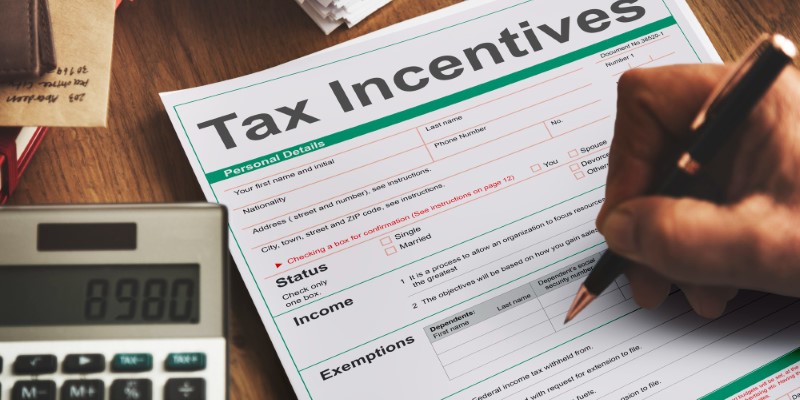Understanding Electric Vehicle Tax Credits and How They Work
Mar 16, 2024 By Triston Martin

The IRS and many states are encouraging the implementation of electric vehicles (EVs) through different tax credits as the world moves towards environmentally friendly transportation. They not only contribute to reducing harmful emissions but also provide substantial long-term fuel cost savings. For numerous consumers, though, the initial expense of buying an electric car can still be a barrier.
Understanding these tax credits is necessary for accountants to guarantee their clients maximize their investment in sustainable cars. Continue reading this article to learn more about electric vehicle tax credits.
What Is the Electric Vehicle (EV) Tax Credit?
A nonrefundable tax credit known as the EV credit is available to taxpayers who buy eligible plug-in hybrid or electric vehicles. Nonrefundable tax credits do not result in a repayment of any excess credit amount. Instead, they reduce your tax payment by the equal credit amount.
In 2024, taxpayers will have two options: they can either transfer the credit to a dealership that qualifies or claim the credit on their federal taxes. Dealerships may then either reduce the price of the car by the amount of the credit or give the customer cash equivalent if they decide to transfer the credit.
Different Types of Electric Vehicle Tax Credits
Now, let's take a look at the various tax credits available for electric vehicles.
Used Clean Vehicle Credit
People could be eligible for a used clean vehicle tax credit (also known as a previously owned clean vehicle credit) if they purchase a certified used electric vehicle (EV) or fuel cell vehicle (FCV) from an authorized dealer for $25,000 or less. Up to a credit limit of $4,000, the credit is equivalent to 30% of the sale price.
Since the credit is nonrefundable, taxpayers cannot apply any unused credit to previous tax years or receive a larger refund than what they owe in taxes. The seller must supply details regarding the vehicle's eligibility at the time of sale. Additionally, sellers have to register online and provide the IRS with the same data. The car won't qualify for the credit if they don't.
Credit for Clean Commercial Vehicles
Under Internal Revenue Code (IRC) 45W, businesses and tax-exempt organizations that purchase a certified commercial clean vehicle may be eligible for a clean vehicle tax credit of up to $40,000. Credit is equivalent to less than 15% of the vehicle's basis (30% if the car doesn't run on petrol or diesel) and the car's additional expense.
For eligible automobiles with gross vehicle weight ratings (GVWRs) of less than fourteen thousand pounds, the maximum amount of credit is $7,500; for all other vehicles, it is forty thousand dollars.
Credits for Electric Cars Purchased Before 2022
Under Internal Revenue Code Section 30D, taxpayers can apply for a clean vehicle tax credit of up to $7,500 for new, qualifying plug-in electric vehicles purchased in 2022 or before. The credit is equivalent to $2,917 for a car with a battery that holds five-kilowatt hours (kWh) or $417 for every additional kWh of capacity above 5 kWh.
The maximum credit amount is $7,500. Since it is nonrefundable, taxpayers cannot carry over any unused credit to previous tax years or receive a more significant credit than what they owe in taxes.
Credits for Electric Vehicles Bought in 2023
Consumers can be eligible for a clean vehicle tax credit if they put a new fuel cell vehicle (FCV) or plug-in electric vehicle (EV) into service in 2023 or later. The seller must supply details regarding the vehicle's eligibility at the time of sale. Additionally, sellers have to register online and provide the IRS with the same data.
How does the EV Tax Credit Work?
Your federal tax obligation for the tax year in which you acquire the car is decreased by the electric vehicle tax credit. When you file your tax return, your tax liability will be significantly reduced if you are eligible for the full tax credit and owe more than seven thousand 7,000 dollars in taxes.
Regardless of their tax obligation, the IRS will allow EV buyers to receive the benefit directly when they buy an electric vehicle from a dealership. This is a big adjustment that increases the tax credit significantly and, according to the government, ought to encourage more people to buy electric vehicles.
Criteria for Qualification
Your modified adjusted income must not exceed the following amount in order to be eligible for the tax credit: fifty thousand dollars for single filers, two hundred twenty-five for heads of households, and three hundred thousand dollars for married couples.
Depending on your salary from the previous year or the year you received the car, you may be eligible. The income limitations for used electric vehicles are as follows: fifty thousand dollars for couples, $112,500 for heads of households, and 75 thousand dollars for single filers.
Certain new car models are eligible for a three thousand seven hundred dollars partial tax credit even though they do not match the standards for the maximum tax credit. These are models that don't meet one of the two specifications for where batteries are sourced.
Claiming EV Tax Credit
When filing their federal income taxes, people can submit Form 8936 to claim the credit. Although the credit can reduce or completely erase your tax due, you will not receive repayment for any unused portion of the credit once your liability is zero. Additionally, you will not be able to carry over any surplus to reduce future taxes.
Taxpayers still have some requirements to fulfill when they transfer the credit to the dealership in exchange for a straight discount. Instead of lowering your tax obligation when you file the following year, transferring may result in instant savings on your purchase. Nevertheless, it does not eliminate the need for you to declare what you spent on your taxes.
Conclusion
In order to encourage the use of electric vehicles and facilitate the transition to a more environmentally friendly transportation system, electric vehicle tax incentives are essential. Governments may expedite the shift towards cleaner and more efficient transport options by providing financial benefits to businesses and consumers. Electric vehicles are expected to become more appealing and feasible as cost reductions and technological advancements progress.
-
 Taxes Mar 16, 2024
Taxes Mar 16, 2024The Role of Tax Credit in Promoting Renewable Energy
Do you want to know about the renewable energy tax credits? In this article, we have discussed types of tax credits and their benefits in creating a cleaner environment
-
 Know-how Nov 18, 2023
Know-how Nov 18, 2023Forecasting 101: Three Common Methods for Predicting Currency Exchange Rates
Learn how to predict currency exchange rates accurately with the impact of Relative Economic Strength, PPP, and Econometric Models.
-
 Know-how Oct 14, 2023
Know-how Oct 14, 2023Cheap Car Insurance in New Mexico
Car owners in New Mexico need to be prepared to deal with a diverse array of possible issues, such as floods, tornadoes, and wildfires, in addition to motorists who do not have insurance coverage. And even the safest driver might be responsible for a devastating collision.
-
 Banking Dec 05, 2023
Banking Dec 05, 2023What Is an Escrow Holdback
Understand all the details of an escrow holdback when closing a real estate sale. Learn about establishing, releasing, and different types of holdbacks!


